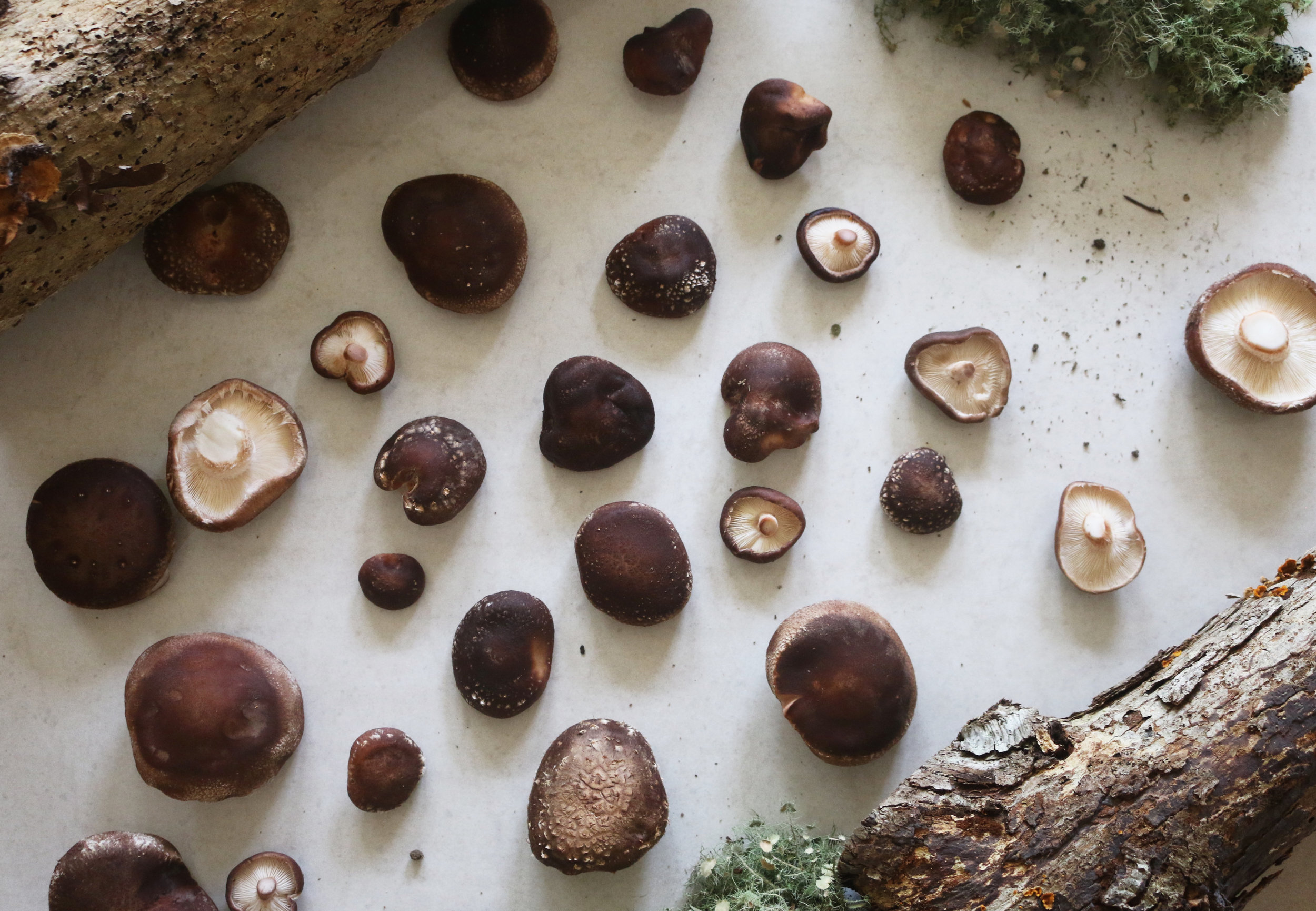Deep in the woods on an island off the coast of Massachusetts are some of the most beautiful shiitake mushrooms you'll likely find on this earth. This isn't by chance but by the labors of Harvard grads turned mushroom whisperers Tucker Pforzheimer and Truman French and their team who go by the collective name of Martha's Vineyard Mycological. The organic vegetable and dairy farming that take place on this eco-minded island have nothing on these guys in terms of sustainability. They aren't just growing truly spectacular shiitake specimens, coveted by chefs and top restaurants all over the "mainland," but they're also carrying out one of the most sustainable–if not the most–farming operations in the food industry. That, and shiitake health benefits, are the real magic of mushrooms.
Shiitake means wood mushroom in Japanese, and these mushrooms don't grow from the ground but on oak wood. In fact, the climate of the island with its moderate temperatures and rolling mists, is similar to that of the forests of Japan. Martha's Vineyard Mycological works with island builders to salvage trees cleared during construction that would otherwise be sent to the chipper. Nearly every step of the growing process is recycled and sustainable with little to no carbon footprint. While other farms are using 100's of acres, Martha's Vineyard Mycological only uses one acre, in part due to the vertical growth of the mushrooms on the oak logs. They give the repurposed logs "a fresh cut to prevent other funghi growing and competing for space, and then we drill holes, and put mycelian (a mix of ground up sawdust) and the fungal body, which is what’s doing the digestion."
And then comes the impressive turnover of shiitakes: "When you introduce the mycelia [fungal like bacterial colonies] into the log, it colonizes for a whole year. Once it’s been implanted, it's permanently in there. It will keep producing for two years and you get ten productions out of it." So what do the mushrooms feed off of? For starters, their need for water is remarkably low. The amount of water needed to produce a gram of protein of beef takes 50X more water than needed to produce shiitake. "Mycelia is respirating as it metabolizes so it's taking in the sugars of the wood and breathing out carbon dioxide just like we do. The wood gets filled with carbon dioxide, and then in order to have enough oxygen to produce the mushrooms, it dissolves all the carbon dioxide out and replaces it with oxygen as it dries. You get many cycles out of each piece of wood, and then it’s still good for firewood after that. "
"Mushrooms are sustainable in general because you're essentially making them with waste products. Shiitake are grown on recycled logs, and all the white button and cremini mushrooms are all grown off manure. a huge growing area in the U.S. is in pennsylvania and that's because of the dairy industry. They're taking the process and getting another step out of it, they're basically composting it."
In terms of DNA, mushrooms are more closely related to the human body than to a plant. They're charged with sunlight energy. "Mushrooms are all protein and minerals. The reason shitaake are tan and brown is the same reason why your skin is tan and brown, it's the vitamin D." Exposing freshly cut shiitake mushrooms, upside down with its gills up, facing sunlight can increase their vitamin D content by 4,600X.
Shiitake Health Benefits
- anti-inflammatory
- cancer fighting properties
- immune system support
- good source of protein
- low in calories
- high in B vitamines (the only non animal source of vitamin B12), copper, riboflavin, niacin, B5+B6, selenium, manganese, zinc, folate and vitamin D
- natural source of sterols, eritadenine and beta glucans which helps block and lower cholesterol absorption
- may lower blood pressure
- antibacterial and antiviral properties








